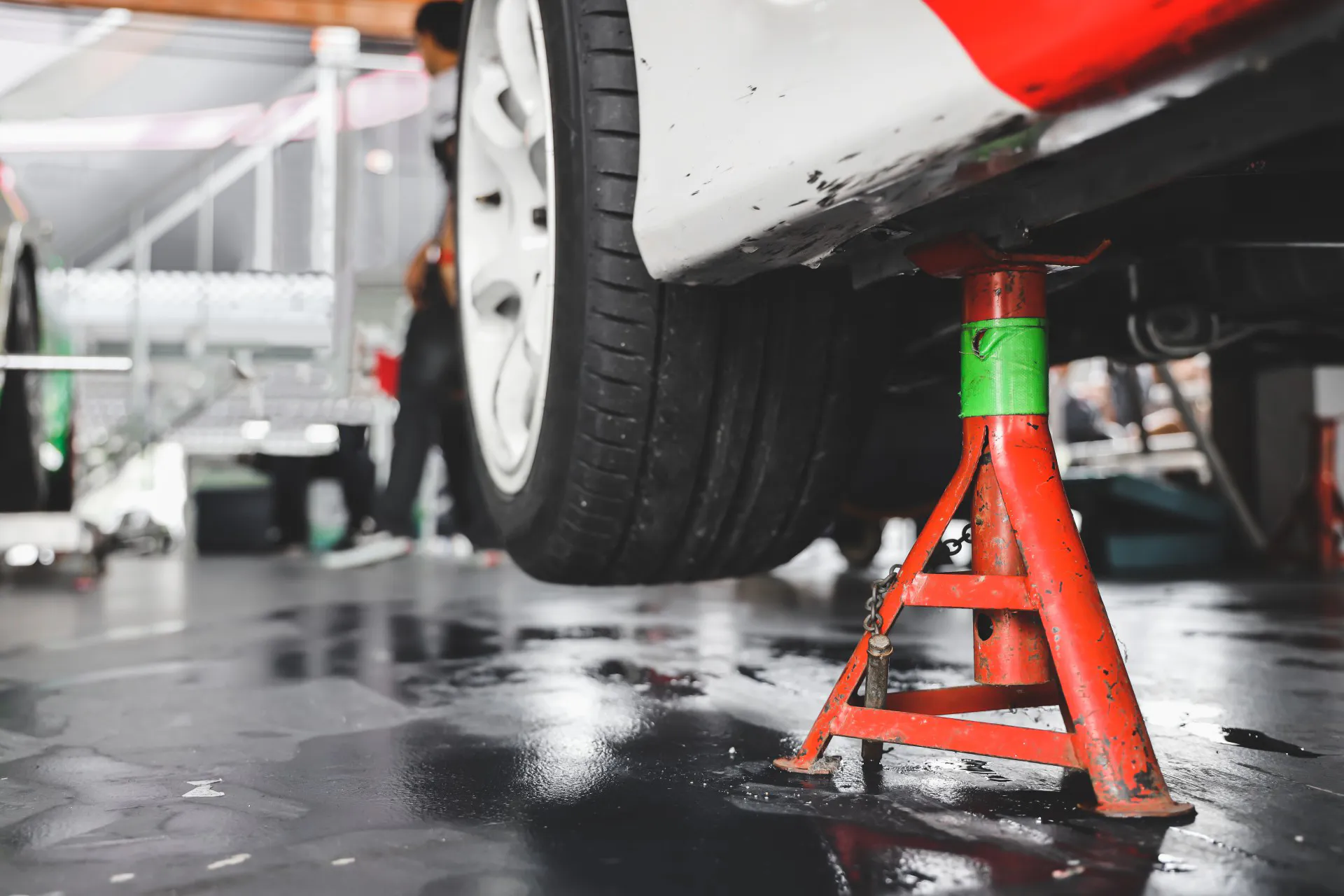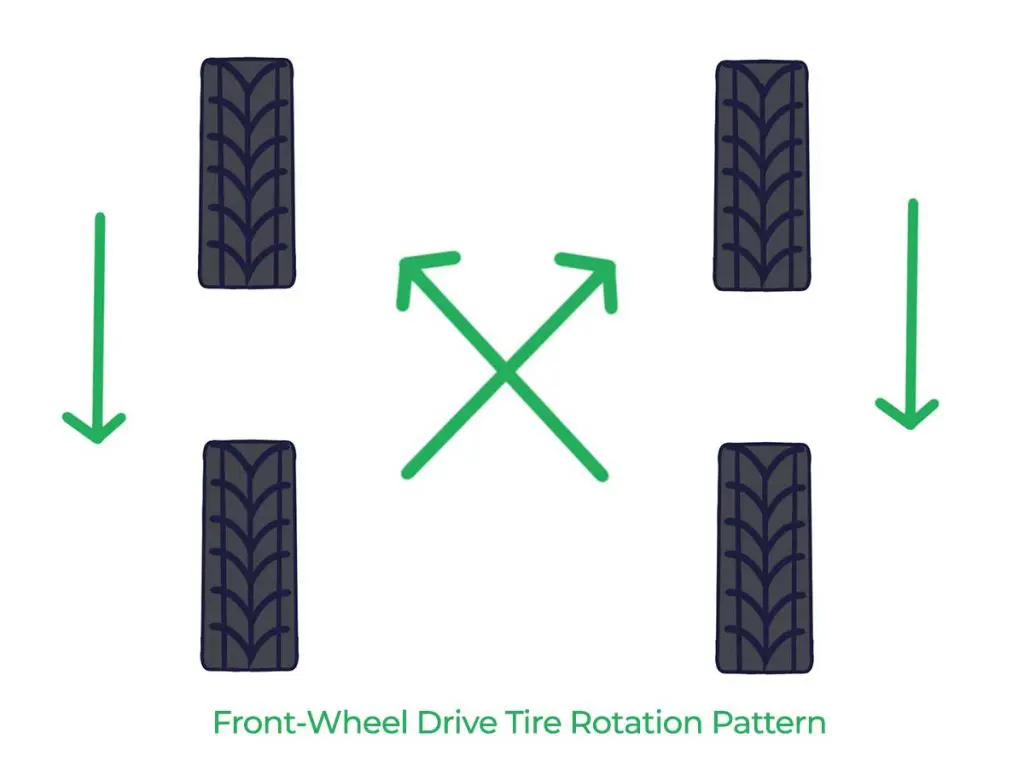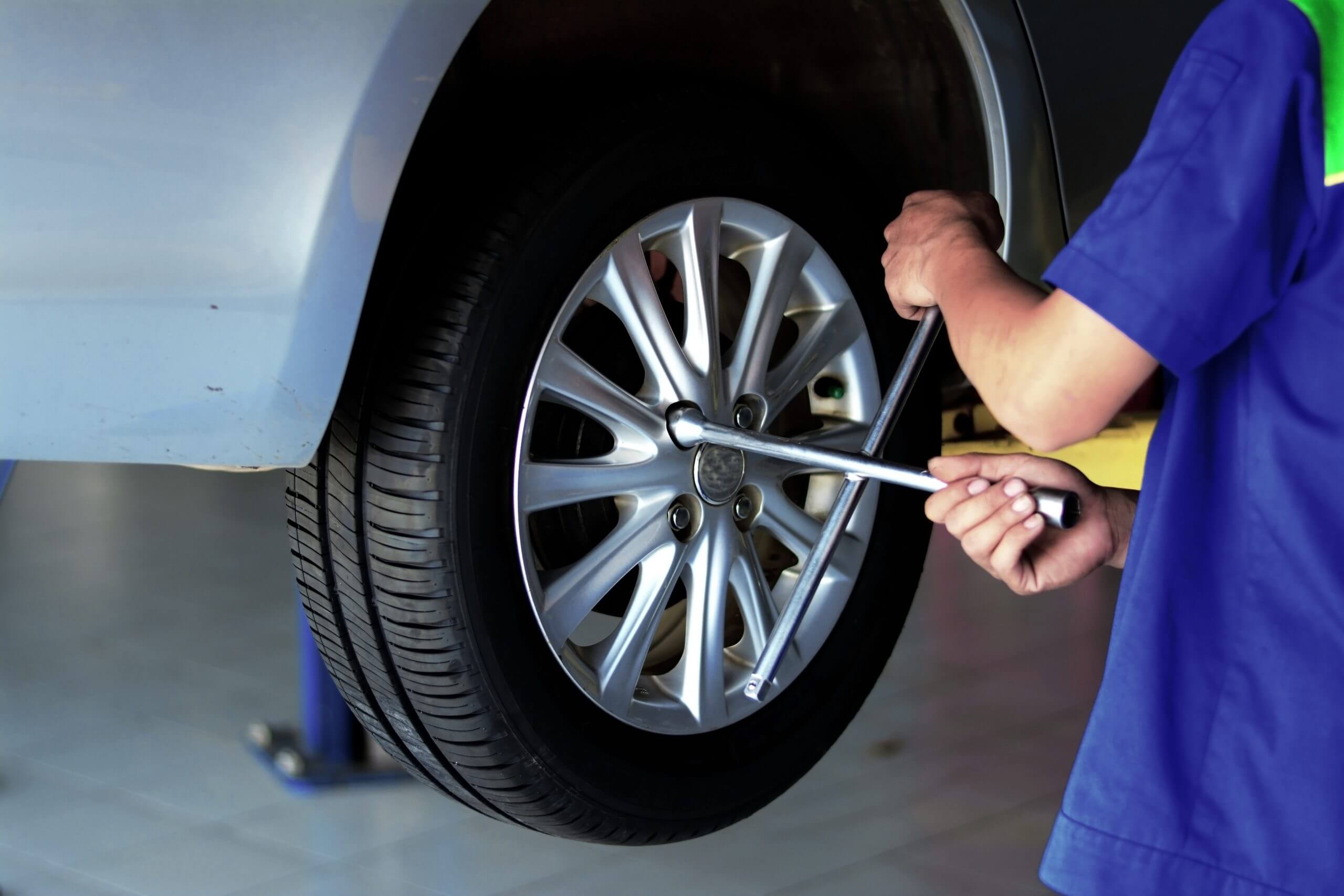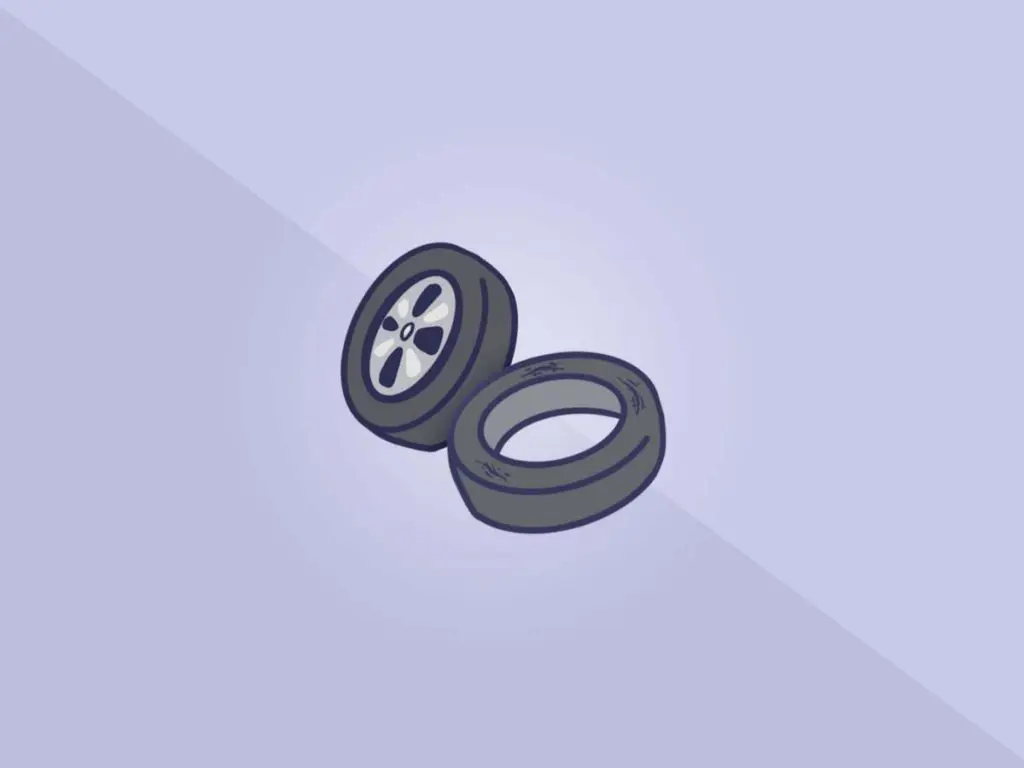Rotating Tires Is a Beginner-Level Task for Most DIYers. Here’s Everything You Need to Know to Rotate Your Car’s Tires at Home.
- DIY Difficulty Level: Beginner – rotating your tires is generally an easy task even for novice DIYers, and most of the tools needed for a tire rotation come with your car.
- Time Required: 1 hour
- Tools & Materials: jack, lug wrench, and jack stands
What Is a Tire Rotation?
Just like the shoes on your feet, your car’s tires are prone to wear over time, but that wear can be uneven based on how the car is driven, tire air pressure, and other factors. Rotating the tires in specific patterns ensures that tread wear is more even to maximize the life of the tires.
While it’s easy to spot a vehicle in dire need of a tire rotation, the goal is to rotate the tires often enough so that they all wear evenly. The most obvious sign of wear is cupped treads, which is when the treads are worn at an angle. This causes tire vibration as well as increased tire road noise. Repair shops will often recommend tire rotations based on mileage (every 6,000 to 8,000 miles).
Is It Safe to Drive with Tires That Haven’t Been Properly Rotated?
If you don’t rotate your tires regularly, it could lead to premature wear. At the very least, this will cause your tires to require replacement more frequently, which is an expensive ordeal. Worst case scenario, excessively worn tires present a road safety concern that could lead to a tire blowing out, hydroplaning, or other dangerous tire-related issues.
Based on the average cost to rotate tires, how long it takes, and the overall ease for DIYers, this job is definitely worth tackling at home. If you’ve ever changed a tire, then performing a tire rotation is well within your abilities. Most cars come from the factory with a jack and a lug nut wrench, so the only tools you’ll need to have are jack stands (four is ideal), a wheel chock, and a hard, flat surface to work on.
If your vehicle has wheels or tires that are staggered in height or width, they cannot be rotated.
How Often Should I Rotate My Tires?
You should consult the owner’s manual of your particular vehicle to figure out how often you should rotate the tires, but common recommendations are for the tires to be rotated every 6,000 to 8,000 miles. This was easy to remember back when it was suggested that oil changes should be done every three months or 3,000 miles so tire rotations would be done every other oil change, but today’s vehicles can go far longer in between oil changes making it a little more difficult.
Even if you don’t know how long it’s been since your last tire rotation, one way to know that it’s been too long is if the treads on your front tires aren’t flat. Tire cupping is a symptom of tires that need to be rotated, and this condition causes the tire’s treads to slope at an angle rather than feeling perfectly round. At minimum, cupping can cause more road noise than normal at higher speeds, but it can also lead to tire vibration.
Be sure to set a maintenance reminder in the FIXD app, and never forget a tire rotation again!
What Are Common Symptoms Indicating You Need to Rotate Tires?
- Unevenly worn tires (referred to as cupping)
- Excessive tire noise
- Tire vibration
Keep in Mind
Rotating your car’s tires is an easy job that will save you money, but remember to always follow the manufacturer recommended maintenance schedule and do this service as advised by the make and model of your car. Other services that are commonly done at the same time include oil changes, cabin air filter replacement, windshield wiper replacement, and more. Like all other preventative maintenance items, repair shops will likely recommend a tire rotation by mileage only unless there are obvious signs such as tire cupping.
How It’s Done
Step 1: Jack Vehicle Up and Remove Wheels

If you read our guide on how to use jack stands for your car, then you already have half of the knowledge you need to rotate your tires. Before jacking up the car, you’ll want to break the lug nuts loose using the weight of the car to hold the wheels in place; just loosen them a little… don’t remove them all the way. When jacking up the car, it’s best to use four jack stands, so you’re able to remove all four tires at the same time to rotate them in a specific pattern.
Step 2: Rotate Tires in Specific Pattern

Depending on the type of vehicle you drive (4×4, AWD, or FWD) and the type of tires on your vehicle (directional vs. non-directional), tires should be rotated in a pattern. On front-wheel-drive vehicles, use a forward cross pattern where the front tires cross sides to the rear (left front moves to right rear) and the rear tires just move to the front (right rear moves to right front).
Rear- and four-wheel drive vehicles use a rearward cross pattern moving the front tires back on the same side and crossing sides for the rears. Vehicles with directional tires (usually performance cars) must keep the tires on the same side, so the tires are able to maintain their directional spin.
If your vehicle has a full-size spare, don’t forget to include that tire in the rotation pattern. This will add a little life to your tires and better ensure that your spare tire is ready for action in case of emergency.
Step 3: Tighten Wheels

Once all of the tires have been rotated, thread the lug nuts on by hand to prevent cross threading the bolts. Only tighten the lug nuts until they are snug. At this point, you can lower the vehicle onto the ground and finish tightening the lug nuts in a star pattern. If possible, use a torque wrench to avoid over tightening the lug nuts, which could cause damage to the wheel studs and/or wheels.
Claim Your Custom Maintenance Schedule
Get the FIXD Sensor and free app today for a custom maintenance schedule based on your make, model, and mileage. Never miss important maintenance again with automated maintenance alerts! Learn more at fixd.com.

Lifelong automotive enthusiast with a soft spot for offroading. Wrencher turned writer, but I still love to tinker on just about anything with an engine. Dream car: tie between a ‘71 Hemi ‘Cuda and a ’91 GMC Syclone. #GirlDad #SaveTheManuals














